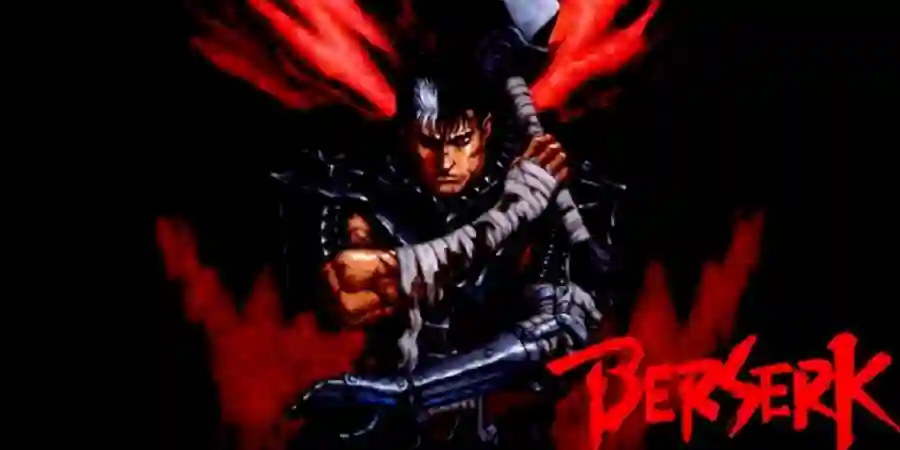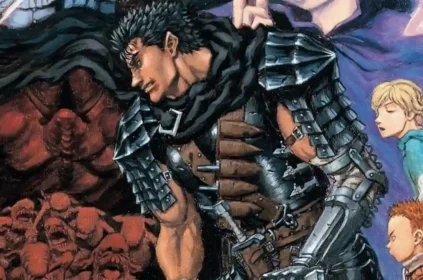Kentaro Miura’s magnum opus, “Berserk,” stands as a testament to the power of storytelling through the visceral lens of epic battles. Within the shadow-draped pages of the manga, the series orchestrates a symphony of violence that transcends mere action sequences. This article explores the mastery of choreography and the emotional impact embedded in Berserk’s epic battles, elevating the series to iconic status within the world of dark fantasy.
A Dance of Blades: Choreography in Action
The battles in Berserk are not chaotic clashes; they are meticulously choreographed engagements that unfold with a cinematic precision. Miura’s attention to detail and the fluidity of his illustrations breathe life into the movements of the characters. Whether it’s Guts wielding the colossal Dragonslayer or Griffith’s elegant swordplay, each panel exudes a sense of choreographic brilliance.
The diversity of combat styles across characters further enriches the visual narrative. From the relentless, brute force of Guts to the finesse and strategic brilliance of Griffith, the choreography reflects the depth of character personalities and backgrounds. Miura’s dedication to authenticity in battle sequences ensures that every clash of blades is a visual spectacle.
Guts: The Berserker’s Ballet
At the heart of Berserk’s epic battles is Guts, the Black Swordsman, whose combat prowess is legendary. Guts’ fighting style is a brutal and relentless ballet of death, a symphony of cleaving through foes with the gargantuan Dragonslayer. The choreography of Guts’ battles not only showcases his immense strength but also captures the toll such power exacts on his body and soul.
The Berserker Armor, a pivotal element in Guts’ arsenal, transforms his battles into frenzied dances of desperation and survival. The sequences where Guts succumbs to the armor’s influence and becomes an unstoppable force of destruction demonstrate Miura’s ability to convey the internal struggle of a character through external, visceral battles.
Griffith: Elegance in Strife
In stark contrast to Guts’ raw power, Griffith’s battles exude elegance and grace. The former leader of the Band of the Hawk possesses a swordsmanship that resembles a carefully choreographed dance. Griffith’s strategic brilliance and swordplay are depicted with a finesse that mirrors his charismatic and enigmatic persona.
The climactic duel between Guts and Griffith during the Eclipse is a masterpiece of choreography and emotional weight. The clash of these two titans, once bound by camaraderie, unfolds with a tragic beauty that transcends the brutality of the battlefield. Miura’s ability to imbue even the most violent confrontations with a nuanced emotional resonance elevates the battles in Berserk to a realm of artistic expression.
The Emotional Impact: Beyond the Physical Conflict
Berserk’s battles are not merely spectacles of physical prowess; they are conduits for emotional expression and narrative development. Each clash serves as a crucible that tests the characters’ resolve, unraveling their fears, desires, and internal conflicts. Whether it’s the profound camaraderie between the Band of the Hawk or the bitter animosity in Guts’ relentless pursuit of vengeance, the emotional weight of each battle reverberates through the pages.
The Eclipse, a cataclysmic event that reshapes the destiny of the characters, is a prime example of the emotional impact embedded in Berserk’s battles. The betrayal and sacrifice that unfold in this nightmarish sequence resonate long after the swords have stopped clashing. Miura’s ability to evoke genuine emotions through the medium of battle sets Berserk apart as a narrative that transcends the boundaries of traditional dark fantasy.
The Pinnacle: Eclipse and Its Aftermath
The Eclipse, often regarded as one of the most harrowing and impactful sequences in manga history, is a testament to Miura’s mastery of choreography and emotional storytelling. The ballet of brutality and betrayal that unfolds during the Eclipse is both visually stunning and emotionally devastating. The impact of this sequence extends beyond the immediate horror, leaving an indelible mark on the characters and the trajectory of the narrative.
The aftermath of the Eclipse, as Guts grapples with the physical and psychological scars, transforms the series into a haunting exploration of trauma and resilience. The battles that follow, whether against demonic entities or internal struggles, are imbued with a newfound depth that reflects the enduring consequences of the Eclipse.
Legacy and Influence: Beyond the Pages of Manga
Berserk’s epic battles have not only left an indelible mark within the manga world but have also influenced the broader landscape of storytelling. Video games like “Dark Souls” and “Bloodborne” draw inspiration from Berserk’s dark and atmospheric battles, replicating the sense of weight and impact in their own combat systems. The series has become a touchstone for creators seeking to capture the emotional resonance of epic battles within the realms of fantasy.
Conclusion:
In the grand tapestry of Berserk, epic battles are not mere set pieces; they are symphonies that resonate with the emotions of characters and readers alike. Kentaro Miura’s meticulous choreography and ability to infuse battles with emotional depth have elevated Berserk beyond a traditional dark fantasy narrative. The series stands as a testament to the power of visceral storytelling, where every clash of swords is a brushstroke in a larger canvas of human struggle and resilience. As the legacy of Berserk endures, its epic battles continue to echo in the hearts of fans, an everlasting testament to the artistry and impact of a singular vision.





